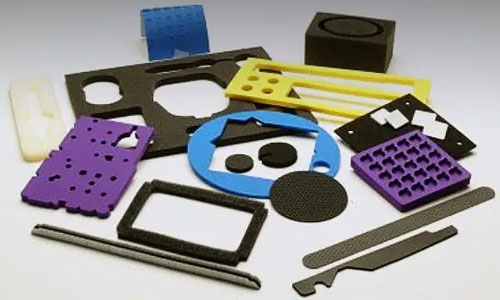1.3 Evolution of Die Cutting Technology

Die cutting technology has evolved significantly over the years, with advancements in machinery, materials, and processes. Here is a brief overview of the evolution of die cutting technology:
1. Hand-operated presses: The earliest form of die cutting involved manual operation of presses. Operators would place the material and die on a press bed and use a lever or handle to apply pressure and cut the material. This method was labor-intensive and limited in terms of speed and precision.
2. Mechanical presses: With the advent of mechanical presses in the late 19th century, die cutting became more efficient and precise. Mechanical presses utilized a flywheel and crankshaft mechanism to generate the required force for cutting. These presses were faster and could handle larger dies, enabling higher production volumes.
3. Hydraulic presses: In the mid-20th century, hydraulic presses emerged as a popular choice for die cutting. Hydraulic presses use hydraulic cylinders to generate cutting force, providing greater control and accuracy. These presses were quieter, more powerful, and could handle thicker materials.
4. CNC-controlled presses: With the introduction of computer numerical control (CNC) technology, die cutting machines became more automated and precise. CNC-controlled presses could follow programmed patterns and cut complex shapes with ease. These machines offered higher speed, accuracy, and repeatability.
5. Laser die cutting: Laser technology revolutionized the die cutting industry by allowing for non-contact cutting of various materials. Laser die cutting machines use a high-energy laser beam to cut intricate patterns with precision and speed. Laser cutting offers advantages such as no tool wear, high flexibility, and the ability to cut materials that are difficult to die cut.
6. Rotary die cutting: Rotary die cutting technology emerged as a specialized method for high-speed and efficient cutting. This method utilizes a cylindrical die and a rotating cutting mechanism to quickly and accurately cut materials. Rotary die cutting offers advantages such as high-speed production, versatility in material handling, and the ability to create complex designs and shapes.
7. Digital die cutting: The latest advancement in die cutting technology is digital die cutting, which combines CNC-controlled machines with digital printing capabilities. Digital die cutting machines can print and cut in a single process, eliminating the need for separate printing and cutting operations. This technology enables on-demand production, customization, and rapid prototyping.
In summary, die cutting technology has evolved from manual hand-operated presses to advanced CNC-controlled, laser, rotary, and digital die cutting machines. These advancements have significantly improved speed, precision, versatility, and automation in the die cutting industry.
Here are the topics that we’ll cover in this complete guide Rotary Die Cutting in Industrial Applications:
Contact: Pamela
Phone: +86 189 6365 3253
E-mail: info@industryprocess.com
Whatsapp:+86 189 6365 3253
Add: Yajing Industrial Park, No. 59 Shuangjing Street, Weiting Town, Suzhou Industrial Park
We chat
